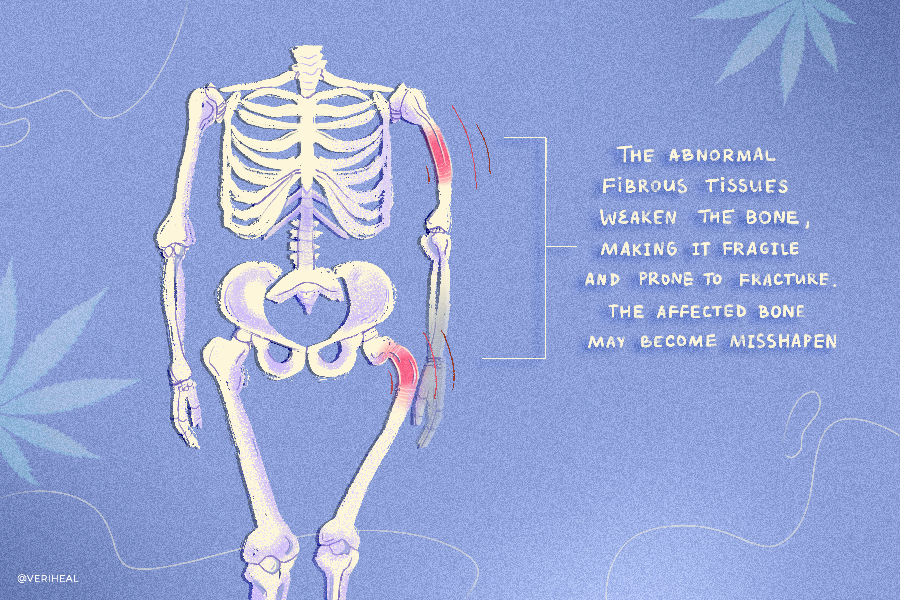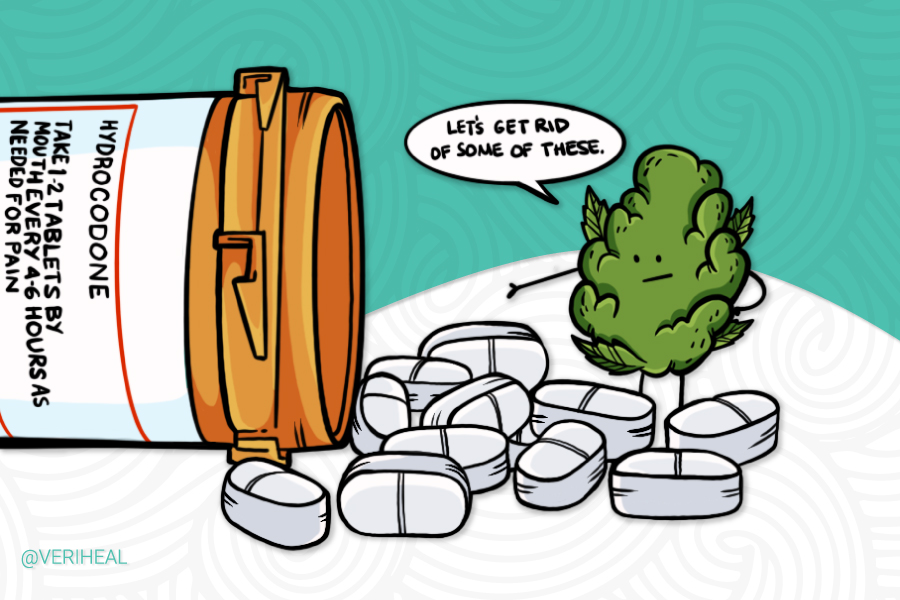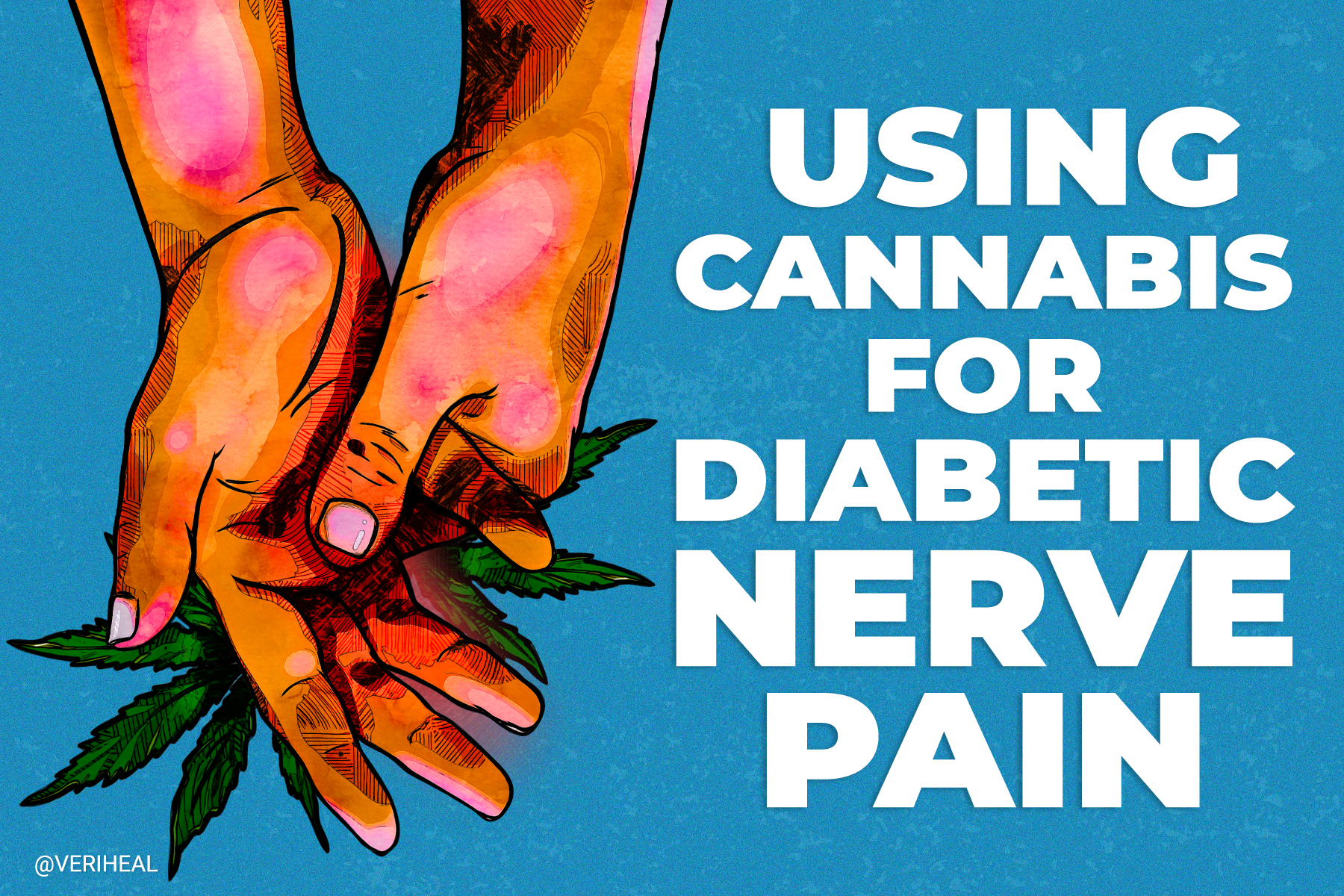Fibrous Dysplasia and Medical Cannabis
- Fibrous Dysplasia: Signs, Symptoms and Types
- Fibrous Dysplasia Treatment: Can Cannabinoids Provide Relief?
- The Role of the Endocannabinoid System in Treating Fibrous Dysplasia
- What Preparations of Cannabis are Best for Fibrous Dysplasia
- Talking to Your Doctor About Medical Cannabis
Fibrous dysplasia is a relatively rare type of bone disorder in which fibrous scar-like tissue is copiously produced in place of normal bone. When this irregular tissue grows, it can result in the affected bone becoming deformed and significantly weaker, thus increasing the risk of fracture.
Accounting for 7% of all benign bone tumors, fibrous dysplasia is non-cancerous and does not spread from bone to bone (11). Any person from any walk of life can develop the disease, but it is usually diagnosed in children and young adults.
Patients with fibrous dysplasia are not always limited to experiencing fibrous tissue misgrowth in one single part of the body since any bone can be affected during development, and multiple bones can be affected at once.
Examples of some of the bones most commonly affected by fibrous dysplasia include:
- Facial bones
- Pelvis
- Ribs
- Shinbone (tibia)
- Skull
- Thighbone (femur)
- Upper arm bone (humerus)
- Vertebrae in the spine
If you’ve been diagnosed with fibrous dysplasia, or if you believe you might be suffering from this medical condition, you will likely experience bone deformity and pain to some extent.
Moreover, fibrous dysplasia can cause you to have a “waddling” walk and, in severe cases, might even spark the onset of scoliosis (2). The importance of treatment should not be ignored.
With its distinct benefits over many types of pain medication, cannabis could be a safer alternative to conventional methods of fibrous dysplasia treatment. The green plant has also been suggested by scientists as a remedy for mobility issues, stress, stiffness, and chronic pain.
Although medicinal cannabis offers abundant therapeutic qualities, the lack of large-scale, high-quality clinical research has deterred some people from trusting cannabis treatment options. To date, there is limited evidence to suggest that medical marijuana may reduce the symptoms of fibrous dysplasia from relevant but not direct studies (3).
Fibrous Dysplasia: Signs, Symptoms and Types
The ratio of healthy cells to abnormal cells in cases of FD influences how many signs and symptoms you experience and the severity of your symptoms. A few patients may have no symptoms, whereas others may have many. It also depends on whether hormones or skin are affected; a combination of FD and extraskeletal features is called McCune-Albright Syndrome (2).
Although researchers are still unaware of why these mutations happen, they know that the mutations usually occur sporadically. There is no way to know or prevent them from happening (4).
Some of the most commonly reported symptoms of fibrous dysplasia include:
- Bone pain – Pain of the bones may occur as a result of fractures or changes to the fibrous tissue
- Misshapen/bowing of bones – This happens most often in the femoral head (top of the thigh bone) and is called a coxa vara (shepherd’s crook)
- Fractures – Usually caused by weaknesses in bone structure
As time progresses, the symptoms of untreated fibrous dysplasia may cause the following physical modifications:
- Leg bone shortening and bowing, resulting in a limp or mobility problems
- Long-term sinus congestion caused by affected facial bones and sinuses
- Spinal curvature leading to scoliosis
- Hearing and vision loss/problems caused by affected facial and skull bones.
Fibrous Dysplasia Causes and Complications
Fibrous dysplasia is associated with the production of immature and irregular bone tissue. The irregular bone tissue (lesion) is typically found on a single bone at one site. Researchers, despite being unsure of the primary cause, note that the disease arises when a gene called GNAS1 mutation after fertilization of the embryo (somatic mutation).
This means that the condition is not inherited and individuals need not worry about passing the mutation on to their children. People affected by fibrous dysplasia will have some somatic (not germline) cells with a standard copy of the gene and others with an abnormal copy.
Individuals diagnosed with a mild type of FD will usually live a healthy life; prognosis depends on which bones are affected and whether or not fractures occur. Some patients only need routine observations; others need medications and even surgery. Untreated FD may result in excessive bone weakness, fractures, and nerve compression.
Fibrous Dysplasia Treatment: Can Cannabinoids Provide Relief?
Medical marijuana treatment can benefit fibrous dysplasia patients in myriad ways, such as regulating bone health, increasing the rate at which bones heal, strengthening bone, easing chronic pain, and speeding the healing of bone fractures.
Clinical studies have shown that medical cannabis may effectively relieve the following symptoms of fibrous dysplasia:
Anxiety, depression, or stress
Cannabis’ anxiolytic effects, as reported in this study on CBD and THC, titled, “Cannabis, a cause for anxiety? A critical appraisal of the anxiogenic and anxiolytic properties,” means that the plant, particularly CBD, could be a valuable tool for reducing feelings of anxiety or depression — two ways in which fibrous dysplasia can take its toll on mental and emotional health (6).
Bone Pain, Inflammation, and Chronic Pain
Low levels of cannabidiol (CBD) and THC are a natural anti-inflammatory and analgesic agents and may ease chronic pain and inflammation associated with fibrous dysplasia. (1, 5)
Bone protection and healing
CBD treatment has been shown to enhance fracture healing in mice and early research, and EC activity protects against bone loss.
Fatigue/Disturbed Sleep
Some strains of CBD-rich cannabis, such as Green Crack and Harlequin, can increase energy levels, not to mention creativity. Cannabis has also been shown in several small studies to promote a good night’s sleep (9).
The Role of the Endocannabinoid System in Treating Fibrous Dysplasia
The cannabinoids in medical marijuana influence receptor and enzyme activity in the endocannabinoid system (ECS), which is the body’s most critical regulatory system. One of the ECS’s many duties is maintaining bone health, homeostasis, and density.
A team of Israeli researchers discovered that cannabinoids in cannabis were able to balance bone-forming cells that form bone, cells that remove bone and protect against bone loss (5).
Researchers who conducted experiments at the University of Bonn in Germany learned that CB1 and CB2 receptors regulate osteoclasts (8). These important cells are responsible for removing old bone tissue and can be pathologically hyperactive in some conditions.
When endocannabinoids and phytocannabinoids stimulate cannabinoid receptors in the ECS, bone metabolism and density can be regulated appropriately, among other essential bodily functions.
Furthermore, researchers found that cannabinoids in medical marijuana successfully enhanced cells that formed bone (osteoblasts) and suppressed the activity of cells that absorb or eliminate bone (osteoclasts).
What Preparations of Cannabis are Best for Fibrous Dysplasia?
One of the main appeals associated with the use of medical cannabis for fibrous dysplasia is the variety of product options infiltrating the market. Let’s explore some of the top cannabis preparations to relieve the symptoms of fibrous dysplasia without smoking:
- Edibles
- Pills, capsules, and tablets
- Powder cannabis powder is a form of powdered THC and/or CBD
- Transdermal patches
- Vapes
- Tinctures
Talking to Your Doctor About Medical Cannabis
To diagnose a case of fibrous dysplasia, it’s advisable to arrange a consultation with your doctor or an orthopedic specialist. They will likely carry out one (or more) of the following tests:
- X-rays – This is the easiest way for doctors to diagnose fibrous dysplasia. An x-ray can be relied on to deeply analyze the bone structure, as well as spot any fractures and misshapen bones
- Magnetic Resonance Imaging (MRI) or Computed Tomography (CT) – These tests deliver the doctor an accurate computer-analyzed image that simplifies the process of evaluating potential disease in the skull and facial bones
- Bone Scan – This type of test for fibrous dysplasia assess the skeleton as a whole, thus enabling doctors to understand how much bone is affected by the disease
- Bone Biopsy – You may have to be prepared to have a small amount of bone tissue removed from an affected area when you undergo a bone biopsy, which involves the use of a microscope
Once you and your doctor arrive at the diagnosis, you can discuss cannabis-based treatments’ medical benefits. However, cannabis should not be used as a substitute for other types of doctor-prescribed medications, physical therapy, braces, or surgery.
At the current time, only Illinois has approved the use of medical marijuana for fibrous dysplasia. Patients who reside in other states might be able to qualify for medical cannabis if they receive a diagnosis for one of the other symptoms that are approved under the state’s list of qualifying conditions, such as chronic pain.
Medical cannabis is also being used to treat the symptoms of HIV/AIDS, Sjogren’s Syndrome, wasting syndrome, syringomyelia, hydromyelia, spasticity, Tarlov cysts, reflex sympathetic dystrophy, chronic inflammatory demyelinating polyneuropathy, neuropathy, residual limb pain, muscle spasms, migraines, severe fibromyalgia, ulcerative colitis, complex regional pain syndrome type II, and agitation of Alzheimer’s.
Some people with terminal illnesses are even choosing to medicate with cannabis, as well as a growing number of people who have dystonia, Alzheimer’s disease, interstitial cystitis, hepatitis C, nail-patella syndrome, Parkinson’s disease, muscular dystrophy, post-concussion syndrome, Arnold-Chiari malformation, myoclonus, spinocerebellar ataxia, spinal cord disease, causalgia, hydrocephalus, myasthenia gravis, neurofibromatosis, and Tourette syndrome.
Cannabis should not be considered a cure or sole treatment option for any of the above conditions and is not yet FDA-approved.
Complementary Treatments Worth Discussing with Your Doctor
Complementary and alternative medicine (CAM) is a type of treatment that falls outside the scope of mainstream healthcare. The umbrella term relates to a range of therapeutic and diagnostic practices that may speed up the recovery process/assist with symptomatic relief for FD patients.
Depending on the severity of your case, a doctor might refer you to take bisphosphonate supplements, wear supportive bracing, or for surgery to stabilize the bone and correct any bone disfigurement. Surgeries are advised to prevent fractures and often involve contouring (shaving) the bone or implanting screws/rods/metal plates.
Other complementary medicines that may offer mental, emotional, and physical relief from the symptoms of FD include massage, meditation, biofeedback, tai chi, reiki, music therapy, and guided imagery. Combined with cannabis use, which was shown to improve feelings of calmness in this study published in the Journal of Cannabis Research, the techniques above could yield positive results (7).
While complementary medicine can be beneficial, you must continue using any medication(s) and treatments your doctor prescribes. Since certain types of medication decrease how quickly the liver modifies and breaks down CBD, meaning that CBD’s effects and side effects may differ, talking with a doctor is advised (10).
Note: The content on this page is for informational purposes only and is not intended to be professional medical advice. Do not attempt to self-diagnose or prescribe treatment based on the information provided. Always consult a physician before deciding on the treatment of a medical condition.
1. Atalay, S., Jarocka-Karpowicz, I., & Skrzydlewska, E. (2019). Antioxidative and anti-inflammatory properties of Cannabidiol. Antioxidants, 9(1), 21. https://www.ncbi.nlm.nih.gov/pmc/articles/PMC7023045/
2. Berglund, J. A., Tella, S. H., Tuthill, K. F., Kim, L., Guthrie, L. C., Paul, S. M., Stanton, R., Collins, M. T., & Boyce, A. M. (2018). Scoliosis in fibrous dysplasia/McCune-Albright syndrome: Factors associated with curve progression and effects of bisphosphonates. Journal of Bone and Mineral Research, 33(9), 1641–1648. https://pubmed.ncbi.nlm.nih.gov/29669167/#:~:text=Abstract,the%20risk%20of%20progressive%20scoliosis
3. Fibrous dysplasia. Fibrous Dysplasia – Marijuana Doctors | Online Medical Card Directory. (n.d.). Retrieved October 4, 2022, from https://www.marijuanadoctors.com/conditions/fibrous-dysplasia/
4. Fibrous dysplasia. NORD (National Organization for Rare Disorders). (2020, September 28). Retrieved October 4, 2022, from https://rarediseases.org/rare-diseases/fibrous-dysplasia/
5. Raphael-Mizrahi, B., & Gabet, Y. (2020). The cannabinoids effect on bone formation and Bone Healing. Current Osteoporosis Reports, 18(5), 433–438. https://pubmed.ncbi.nlm.nih.gov/32705630/
6. Sharpe, L., Sinclair, J., Kramer, A., de Manincor, M., & Sarris, J. (2020). Cannabis, a cause for anxiety? A critical appraisal of the anxiogenic and anxiolytic properties. Journal of Translational Medicine, 18(1). https://www.ncbi.nlm.nih.gov/pmc/articles/PMC7531079/
7. Stith, S. S., Li, X., Diviant, J. P., Brockelman, F. C., Keeling, K. S., Hall, B., & Vigil, J. M. (2020). The effectiveness of inhaled cannabis flower for the treatment of agitation/irritability, anxiety, and common stress. Journal of Cannabis Research, 2(1). https://jcannabisresearch.biomedcentral.com/articles/10.1186/s42238-020-00051-z#citeas
8. Tam, J., Trembovler, V., Di Marzo, V., Petrosino, S., Leo, G., Alexandrovich, A., Regev, E., Casap, N., Shteyer, A., Ledent, C., Karsak, M., Zimmer, A., Mechoulam, R., Yirmiya, R., Shohami, E., & Bab, I. (2007). The cannabinoid CB1 receptor regulates bone formation by modulating adrenergic signaling. The FASEB Journal, 22(1), 285–294. https://www.researchgate.net/publication/6135979_The_cannabinoid_CB1_receptor_regulates_bone_formation_by_modulating_adrenergic_signaling
9. Velzeboer, R., Malas, A., Boerkoel, P., Cullen, K., Hawkins, M., Roesler, J., & Lai, W. W.-K. (2022). Cannabis dosing and administration for sleep: A systematic review. Sleep. https://pubmed.ncbi.nlm.nih.gov/36107800/
10. WebMD. (n.d.). Cannabidiol (CBD): Overview, uses, side effects, precautions, interactions, dosing and reviews. WebMD. Retrieved October 4, 2022, from https://www.webmd.com/vitamins/ai/ingredientmono-1439/cannabidiol-cbd
11. Wells, M., Quinn, R. H., & Lesko , G. (2022). Fibrous dysplasia. OrthoInfo. Retrieved October 4, 2022, from https://orthoinfo.aaos.org/en/diseases–conditions/fibrous-dysplasia/









